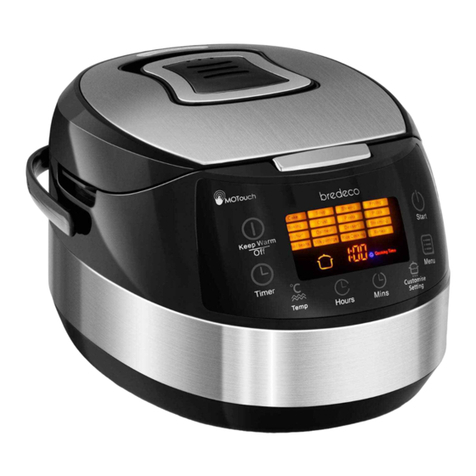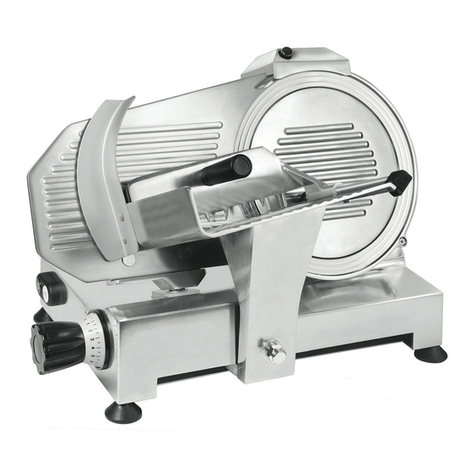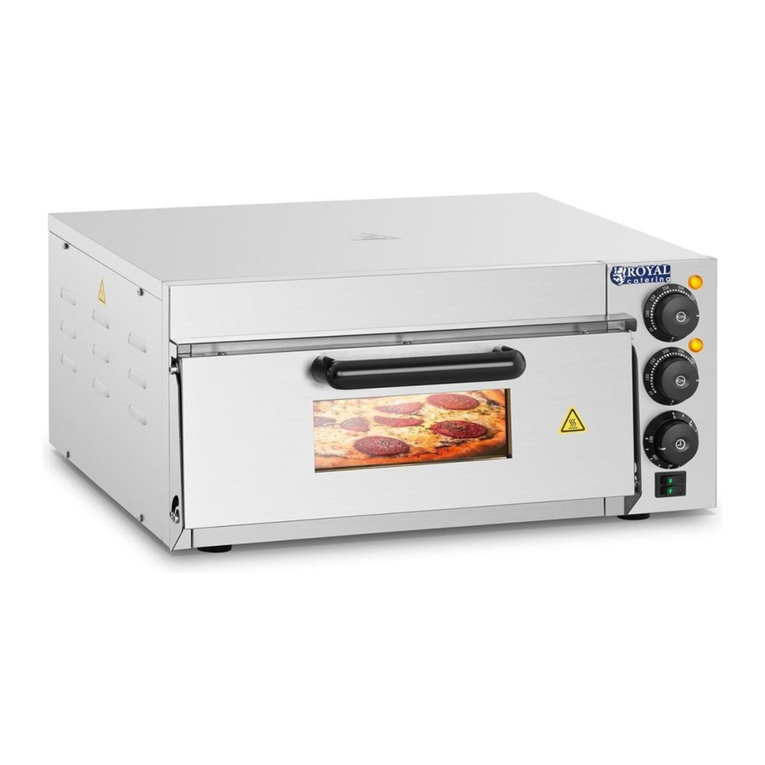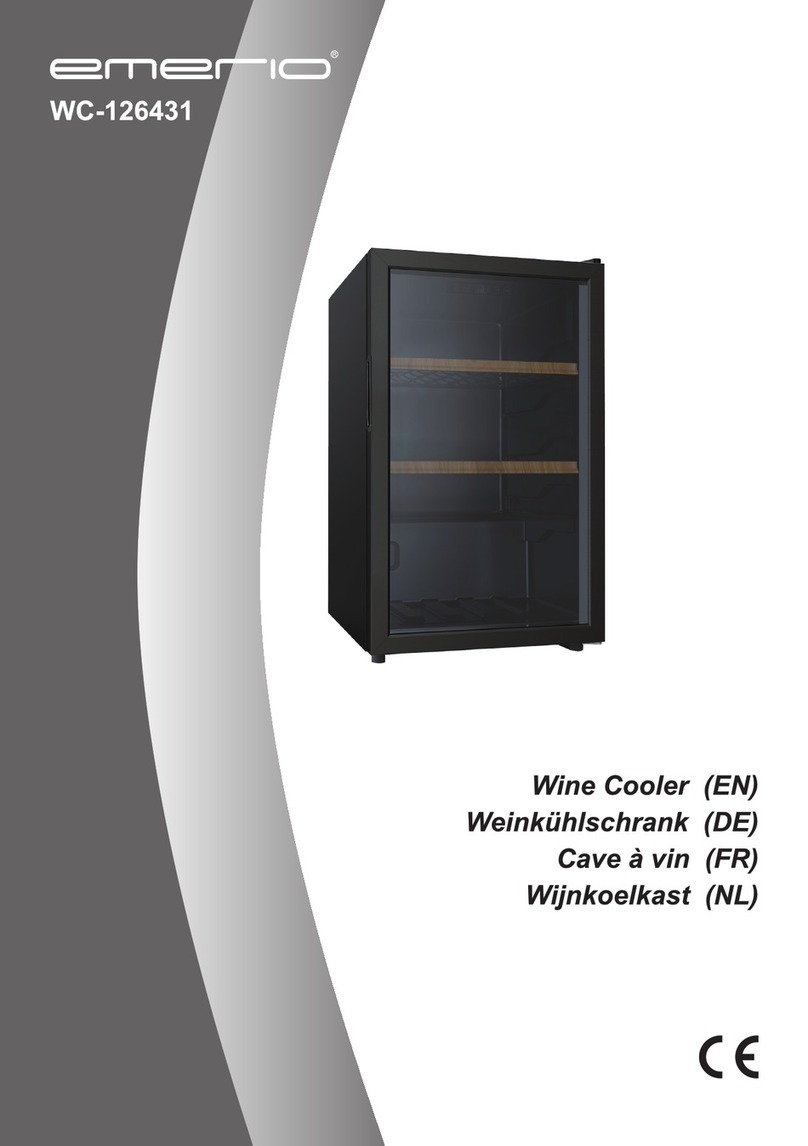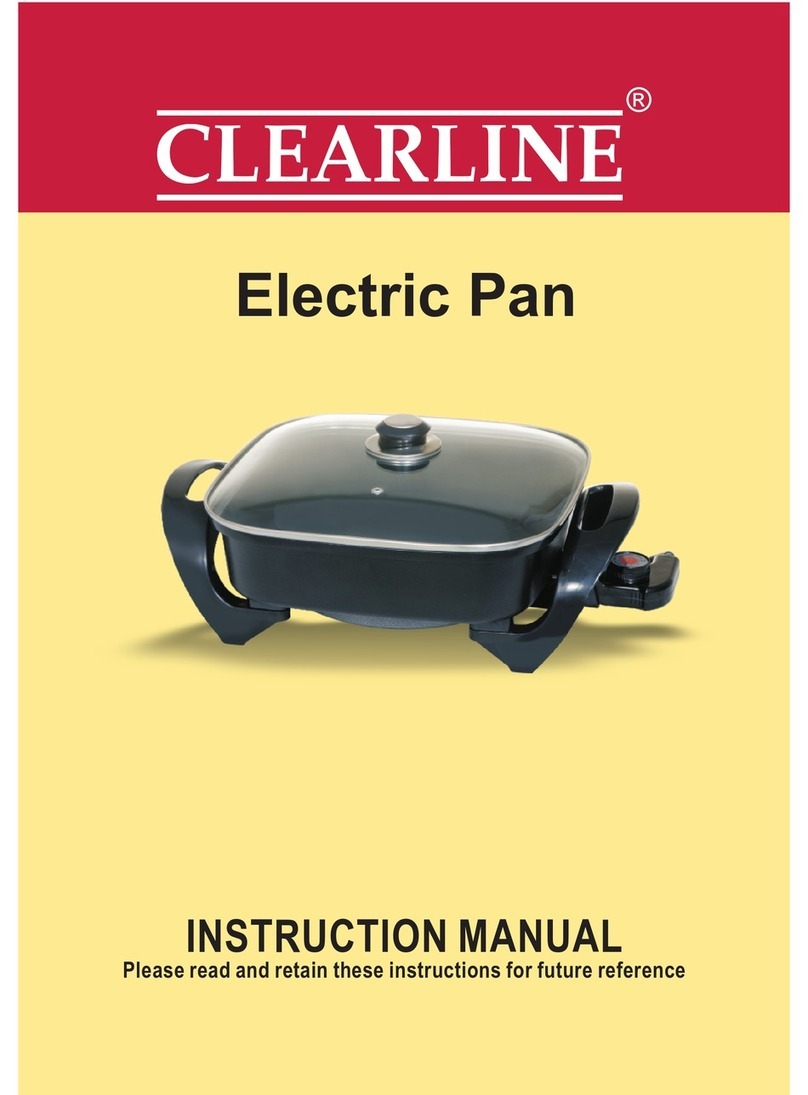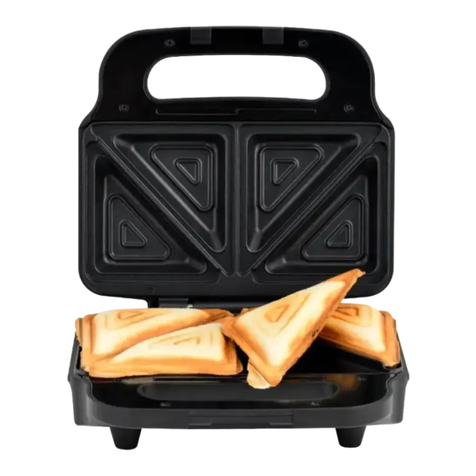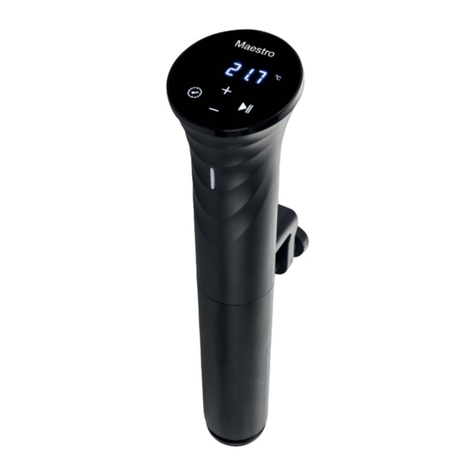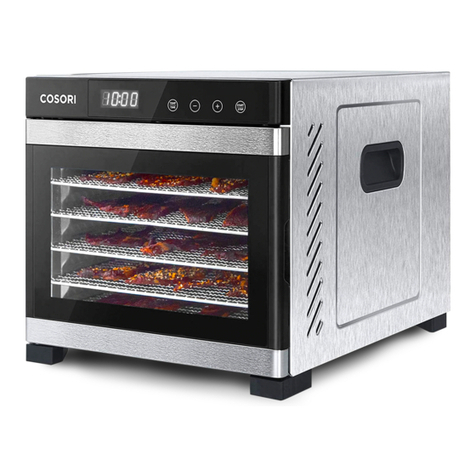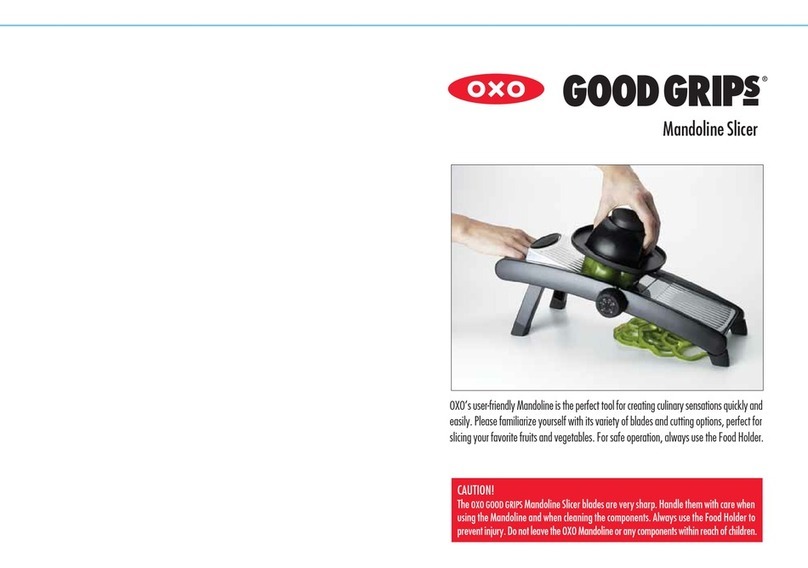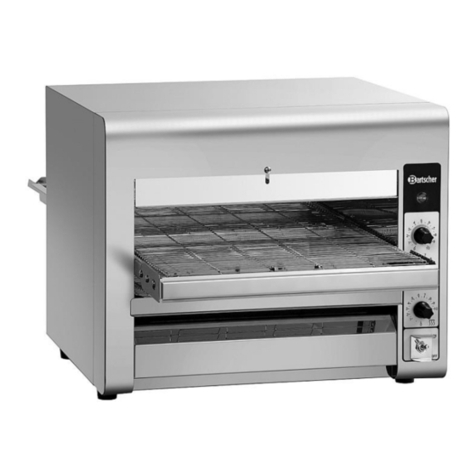Shaffer-Berry SY0191OC-R User manual

www.usa.shaffer-berry.com
Cast Iron Cookware
Instruction Manual - Read in full and retain for future use

Range
Tri layer enameled cast iron cookware by SHAFFER- BERRY
SY0191OC-R 33cm Oval casserole dish and lid - red
SY0192CO-C 33cm Oval casserole dish and lid - charcoal
SY0193FP-24-R 24cm Fry pan –red
SY0194FP-24-C 24cm Fry pan –charcoal
SY0195FP-31-R 31cm Fry pan and lid –red
SY0197RP-R 33cm Roasting / Lasagna pan - red
SY0198RP-C 33cm Roasting / Lasagna pan - charcoal
FAQ
Why enamel?
Enamel has many excellent properties, it is smooth, hard, chemically resistant, durable, scratch resistant. It has long-lasting color
fastness, is easy to clean, and cannot burn.
What is porcelain enamel?
The key ingredient of vitreous enamel is a highly friable form of glass called frit. When the cast iron cookware is cast in the traditional way,
‘frit’ is applied and heated in a very high oven at approximately 1200-1400°F, causing it to melt and transform into the smooth resistant
porcelain surface that bonds to the metal.
Advantages?
Enameled cast iron cookware offers superior heat retention and outstanding cooking results for a variety of foods, producing tender and
flavorful meats, soups, stews and many other dishes. The porcelain surface eliminates the need to “season” the surface as required by
bare cast iron cookware before cooking. However, enameled cookware requires that you do apply a coating of oil to improve cooking and
make cleaning easier. Enameled cookware is not suitable for dry cooking.
Looked after correctly, it will last a lifetime.
Before First Use
Remove any stickers or packaging. Plastic bags can be a hazard to young children so should be destroyed immediately.
Hand wash only. Not recommended for the dishwasher.
Wash cookware with mild detergent and hot water prior to using it for the first time. This will remove any impurities that may have built up in
transit. Do not use harsh scourers or chemicals as these may damage the surface.
Rinse well and dry completely with a soft, clean towel.

Cooking Tips
Handling
Always use heat-proof oven gloves or cloths when handling the cookware as it will reach high temperatures during cooking.
Porcelain material can chip or crack if dropped or hit. Handle with care.
Avoid using metal utensils when cooking as they may scratch the surfaces. Use wooden or silicon type utensils.
Weight
This cookware is relatively heavy to handle. Always handle with care using two hands. Be aware that the cookware is heavy.
Size
As in all cooking always use the correct cookware vessel to suit the size of the heating element. Do not use a small based dish or pan, on
a large element for example.
Lid
Cook with the lid on when appropriate. This will save both time and energy.
Sticky food
To avoid food sticking to the surface always spray the surface with cooking or vegetable oils before heating. Enamelled cookware is NOT
suitable for dry cooking.
a. Make sure the surface is clean
b. Apply a layer of suitable cooking oil of choice to all internal surfaces.
c. Make sure the cooking oil is at the correct temperature before placing food into the utensil.
d. If food does stick lower the heat a little or remove from the heat source. The food will release on it’s own.
e. Let food from the refrigerator rest for a while at room temperature. Cold meat sticks easily to surfaces when cooked. If the food
surface has water on it will lower the temperature of the oil and promote sticking. Dry the surface of the food by patting it with a
tissue before placing in cookware.
Cooking Heats
Heat cookware gradually on low to medium heat only. Low to medium heat settings are recommended only for cooking.
Use high heat only sparingly when required during cooking such as searing meats. This cookware is very efficient and it is not
recommended to use high heat settings for most food items. Use this cookware in an oven safely up to 460°F
Oils
Enameled surfaces are not suitable for dry cooking. Ensure the entire cooking surface is coated in a light coating of oil. Olive oil or peanut
oil is recommended. Heavy vegetable oils may leave a residue that can affect nonstick performance. Use low heat when heating up oils.
Warning! Oils can quickly overheat and cause a fire, never leave unattended.

Salt
Avoid adding salt directly to the surface of any cookware at any time. Salt may cause spots or pitting. If foods require salt, add it after the
water is boiling or directly to food while cooking and stir immediately. Never leave food sitting in the cookware for long periods as un-
dissolved salt may cause pitting.
Ceramic Cooking
When using glass top type ceramic cookers always lift the cookware from the element; do not slide cookware across surface. Do not drop
the cookware onto the cook top. Remove any spilt food as soon as possible. Follow cook top manufacturer’s instructions.
Gas Cooking
Warning! Never let the gas flame rise above the base of the cookware. This may damage and discolour the sides of the cookware.
Induction Cooking
If optional do not use the boost function for longer than is required to bring the pan's contents to a boil. The boost function should only be
used for rapid heating of large quantities of water. During cooking, you may notice some slight noise being generated in the pan by the
induction hob. This is normal.
Casserole Cooking
It's hard to beat the wonderful flavours and aromas you get from slow-cooked casseroles. This simple cooking method takes everyday cuts
of meat and chicken and transforms them into hearty, delicious meals.
The real beauty of casseroles is how easy they are to make. All you need to do is combine the prepared ingredients in your Shaffer-Berry
cast iron casserole dish, then cover and place in the oven to cook.
Handy hints.
Cut your ingredients, such as meat, potatoes and parsnips, into similar-sized pieces to ensure they cook evenly. Add any ingredients that
cook quickly, such as broad beans, towards the end of cooking.
Avoid adding flour after cooking or the raw flour taste will remain. Rather, to thicken the liquid, meat or vegetables are often dipped in flour
before cooking.
Shaffer-Berry tight-fitting lid on your casserole dish ensures the dish doesn't lose moisture during the long cooking process.
Meat Tips
Meat is the soul of most casserole dishes. Here are a few points to remember when selecting and preparing meat for your casserole.
Choose tougher cuts of meat. They have more connective tissue that becomes tender and doesn't disintegrate when cooked
slowly. They also tend to be more flavorsome in casseroles.
Coat the meat in flour just before cooking. If you coat it too early, the moisture in the meat absorbs the flour and spoils the
texture of the casserole.
Begin by browning the meat or chicken, separately, before adding vegetables, liquids and herbs. This seals in the juices and
adds flavour.

Work in batches when browning meat or chicken. If you add too much to the pan at once, it will cook in its own juices and
become tough.
Cooking your casserole
Every casserole recipe has its own distinctive ingredients and flavours but, for each, the basic cooking process is the same. Here are the
four key steps for a perfectly cooked and flavorsome meat casserole.
Place flour on a plate. Season with salt and pepper. Add the meat and toss to coat. Shake off excess. Alternatively, place
seasoned flour in a sealable plastic bag. Add the meat and shake to coat. By coating the meat in this way, the flour thickens the
liquid in the casserole.
Heat oil in casserole dish over medium heat. Add one batch of meat and cook for 2-3 minutes or until brown. Transfer to a plate.
Repeat with remaining meat, reheating the dish between batches.
Add a little extra oil to the dish. Add the vegetables, such as onion, carrot and celery, and any extra ingredients, such as bacon
or prosciutto. Cook, stirring with a wooden spoon, for 2-3 minutes or until the vegetables are soft and slightly golden.
Return the meat to the dish. Stir in the liquid ingredients, such as stock, wine and canned tomatoes, and herbs or spices, if
desired. Cover tightly and bake in the oven according to your recipe.
Perfect casserole cuts
The long, slow and moist method of casserole cooking results in sensational flavour and texture, especially when you use tougher cuts and
meat and chicken on the bone. Here's a guide to the best cuts to choose.
Beef - Chuck steak, round steak, blade steak, topside, fresh silverside, skirt steak and boneless shin (gravy) beef.
Veal - Shanks, veal shoulder and diced veal.
Lamb - Boneless shoulder, boneless forequarter, shanks, neck chops and diced lamb.
Chicken - All chicken pieces are ideal for casseroles. For extra flavour, choose chicken pieces on the bone.
Pork - Diced pork shoulder, forequarter chops and pork belly.
Searing your meats
Meat is all about searing the meat outer surface which is all about flavour. When the meat touches the scorching hot pan surface the meat
instantly starts to caramelize on the outer
Heating and oil
High temperatures are needed to get true caramelized meats. Add a thin layer of vegetable cooking oil to the surface of the frypan
(vegetable has a higher smoke point) and place on high heat. Make sure your Shaffer-Berry pan is hot.

Dry your meat
Make sure your meat is dry (pat dry with a paper towel if necessary). When the oil starts to smoke and shimmer you’re ready.
Don’t fiddle
Place the meat into the pan and leave it alone for the desired time, don’t be tempted to turn it over. Shake the pan gently to check
readiness. If the meat is loose it is ready to flip over and repeat.
Once it is seared properly it can be served, baked in an oven, casserole, roast or continue with whatever your recipe requires.
Season meats with salt and pepper just before cooking if you desire.
Sauté Meat, Fish and Vegetables
To sauté is to cook food quickly in a minimal amount of fat over relatively high heat. The word comes from the French verb sauter, which
describes not only how food reacts when placed in a hot pan but also the method of tossing the food in the pan. The term also refers to
cooking tender cuts of meat (such as chicken breasts, scaloppini, or filet mignon) in a small amount of fat over moderately high heat
without frequent stirring―just flipping it over when one side is browned.
And because the food is cooked quickly, the integrity of the flavor and texture remains intact; asparagus, for example, retains its slightly
grassy punch, as well as a pleasing crisp-tender bite.
Your Shaffer-Berry fry pan is ideal for this technique.
Whether its meat or vegetables, time in the pan is brief, so it's important that the food be naturally tender. Cuts such as beef tenderloin, fish
fillets, and chicken breasts are good candidates; tougher cuts like brisket or pork shoulder are better for long cooking over low heat. The
same principle holds for produce. Asparagus tips will be more successfully sautéed than beets. Many other tender vegetables, including
baby artichokes, sugar snap peas, mushrooms, and bell peppers, lend themselves to this technique. That's not to say that denser, tougher
vegetables can't be sautéed―they just may need to be blanched (briefly cooked in boiling water) first to get a head start on cooking.
Cutting food to a uniform thickness and size ensures that it will cook evenly. Vegetables should be no larger than bite-sized, meat no larger
than portion-sized. Meat that is too thick or vegetables that are too large run the risk of burning or forming a tough, overly browned outer
crust in the time that it takes to completely cook them. Have the ingredients prepped before heating the pan.
Heat the pan over medium-high heat for a few minutes. It needs to be quite hot in order to cook the food properly. If the heat is too low, the
food will end up releasing liquid and steaming rather than sautéing.

Fats such as butter, oil, or bacon fat are used to coat the food and prevent it from sticking to the pan, aid in browning, and add flavor. Once
the pan is hot, add the fat, and swirl to coat the bottom of the pan. Heat the fat for 10 to 30 seconds―until oil shimmers or butter's foam
subsides―and then add the food.
In general, use fats that have a high smoke point―peanut oil, regular olive oil, canola oil, or rendered pork fat. Once the fat begins to
smoke, the flavor changes and can affect the food's taste. Butter adds great flavor, but it may burn, so you will either need to clarify it to
remove the milk solids (which are prone to burning) or combine it with oil so there's less chance of burning. Oils that have low smoke
points, like extra virgin olive oil and many nut and infused oils, lose their characteristic taste when heated to sautéing's high temperatures.
It's OK to sauté with these oils―just remember that their flavor will not be as pungent.
It's crucial that only one layer of food cooks in the pan at a time. When sautéing cuts of meat, there should be at least a half-inch between
each piece. Food releases steam when cooking. If that steam doesn't have enough room to escape, it stays in the pan, and the food ends
up steaming rather than sautéing and won't brown. If you've ever tried to sauté a large amount of cubed beef for a stew, you may have
experienced this problem. The solution is simply to sauté the food in smaller batches.
When sautéing tender vegetables and bite-sized pieces of meat, stir frequently (but not constantly) to promote even browning and cooking.
Dense vegetables such as cubed potatoes, though, should be stirred once every few minutes so that they don't fall apart as they grow
tender. Portion-sized cuts of meat (chicken breasts, steaks, or pork medallions, for example) should only be turned once so they have
enough time to form a nice crust, which will also keep the meat from sticking to the pan.
Stir-frying and sautéing are techniques that share some similarities. Both methods cook food quickly in a small amount of fat. But stir-frying
cooks food over intensely high heat, stirring constantly. Sautéing involves only moderately high heat, and the food is not in continuous
motion.
Care and Cleaning
In order to obtain the maximum benefits from your Shaffer-Berry cookware under the most vigorous everyday use, the following guidelines
are recommended. Always handle with care.
Not recommended for the dishwasher. Hand wash only.
Wash your cookware after use in hot soapy water with a mild detergent. Hand wash is recommended. Dry thoroughly.
Warning! Do not wash your cookware with harsh detergents or cleaners like steel wool or scouring pads. These harsh cleaning efforts can
severely damage the cooking surface
Warning! Don’t use metal utensils, scrapers and abrasive materials to remove hard to remove food. Soak before washing if needed.

Stubborn food stains can be removed by soaking overnight in liquid and detergent. Always wash thoroughly afterwards.
Alternatively bring to boil a mixture of water and vinegar to loosen stubborn food stains.
Hard water stains can be removed by using a cloth soaked with lemon or vinegar.
Dry immediately after cleaning to prevent water spots and stains
Important Safety Information
Warning! Children –All young children or persons with reduced physical, sensory or mental capabilities, or lack of knowledge must be
supervised when cooking to ensure safety. Do not leave young children unattended whilst cooking as there may be a risk of burns,
scalding or fire. Safely dispose of any plastic bags or other packaging that may present a hazard to young children of suffocation or choke
hazard.
Do not allow handles of cookware to extend outside the cook top surface area as there may be a risk of young children pulling the
cookware over creating a risk of scalding.
Warning! Fire. Never leave frying pan or other cookware heating oil’s or fats unattended as there may be a risk of fire.
Cooking Heats - Heat cookware gradually on low to medium heat only. Use high heat only when required during cooking such as searing
steak.
Burns –Shaffer-Berry cast iron cookware will reach high temperatures when heated and retain this heat for a period. Do not touch the
hot surfaces of the cookware. Please take extreme caution when using the cookware set by using oven gloves and or pot holders to
protect from personal injury. Always place a hot pan onto a heat resistant surface.
Temperature changes - Never put cold liquids into a hot utensil. Sudden changes in temperature will damage the metals. Allow to cool
completely first before washing.
Damage –Never place hot cookware directly from heating element to any bench surface or other surface that is not heat resistant
sufficient to withstand the temperature of the cookware when heated. Damage to any surface due to misplacement is not covered by any
warranty condition.
Do not drop or hit the cookware as the porcelain enamel, although extremely hard can chip or crack.
www.usa.shaffer-berry.com
www.shaffer-berry.com
Global Office
Asia Pacific Brands Limited
Auckland, New Zealand
New Zealand call toll free 0508-274-2722
USA call toll free: 1-888-783-5817
Australia call +64-9-974-9206
NZ:www.shaffer-berry.com
USA: www.usa.shaffer-berry.com
This manual suits for next models
6
Table of contents
Popular Kitchen Appliance manuals by other brands
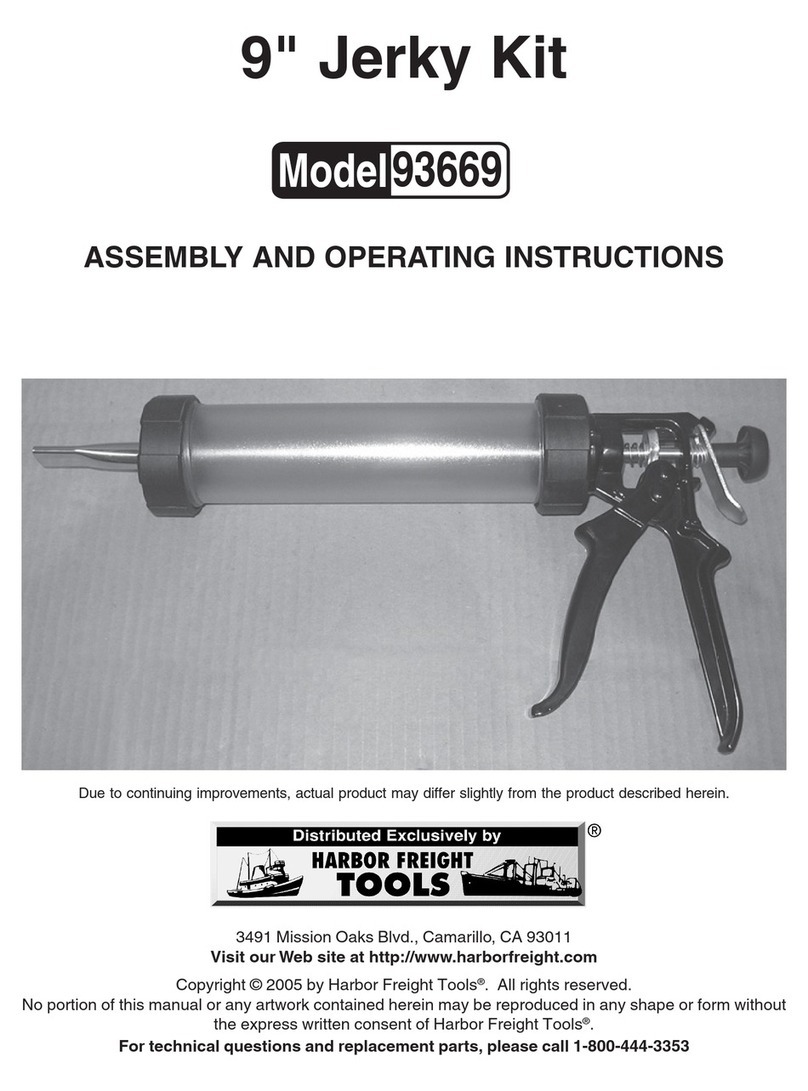
Harbor Freight Tools
Harbor Freight Tools 93669 Assembly and operating instructions
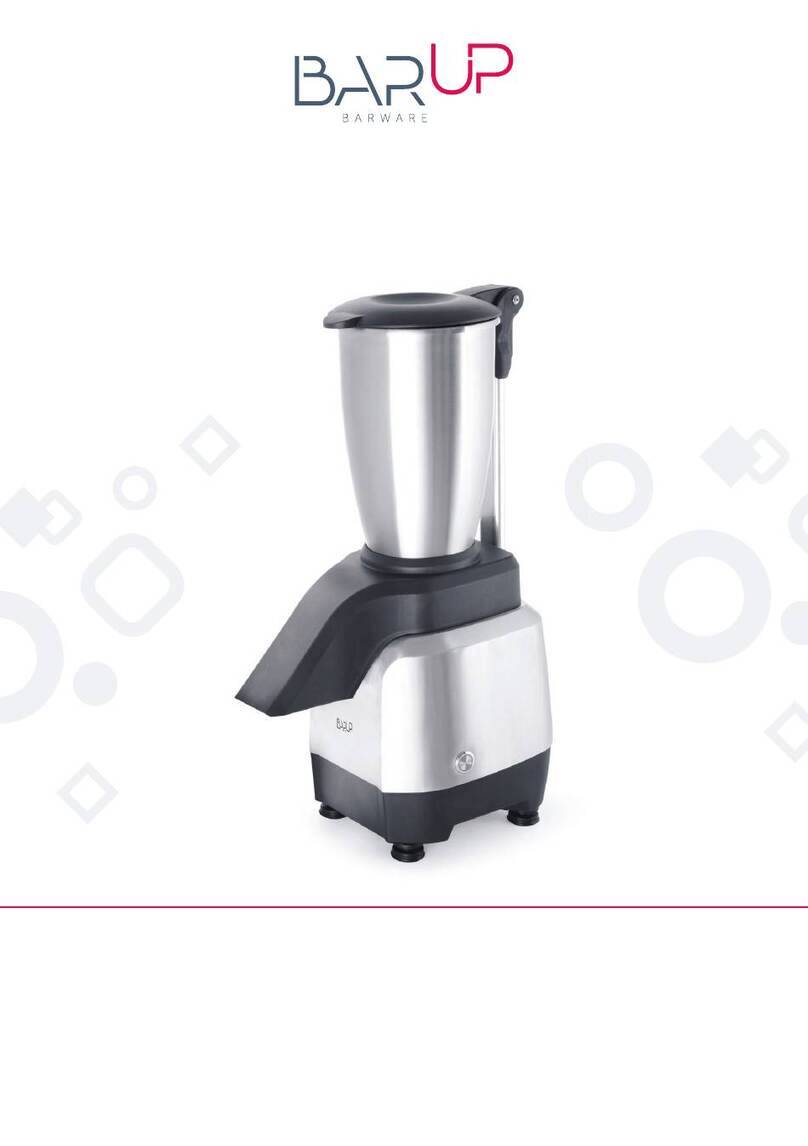
BarUp
BarUp 271599 user manual
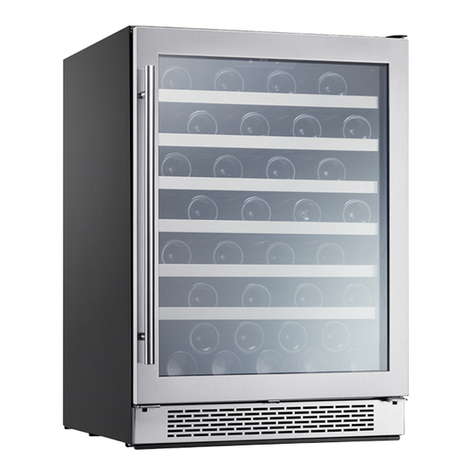
Zephyr
Zephyr PRW24C01BG Use, care and installation guide
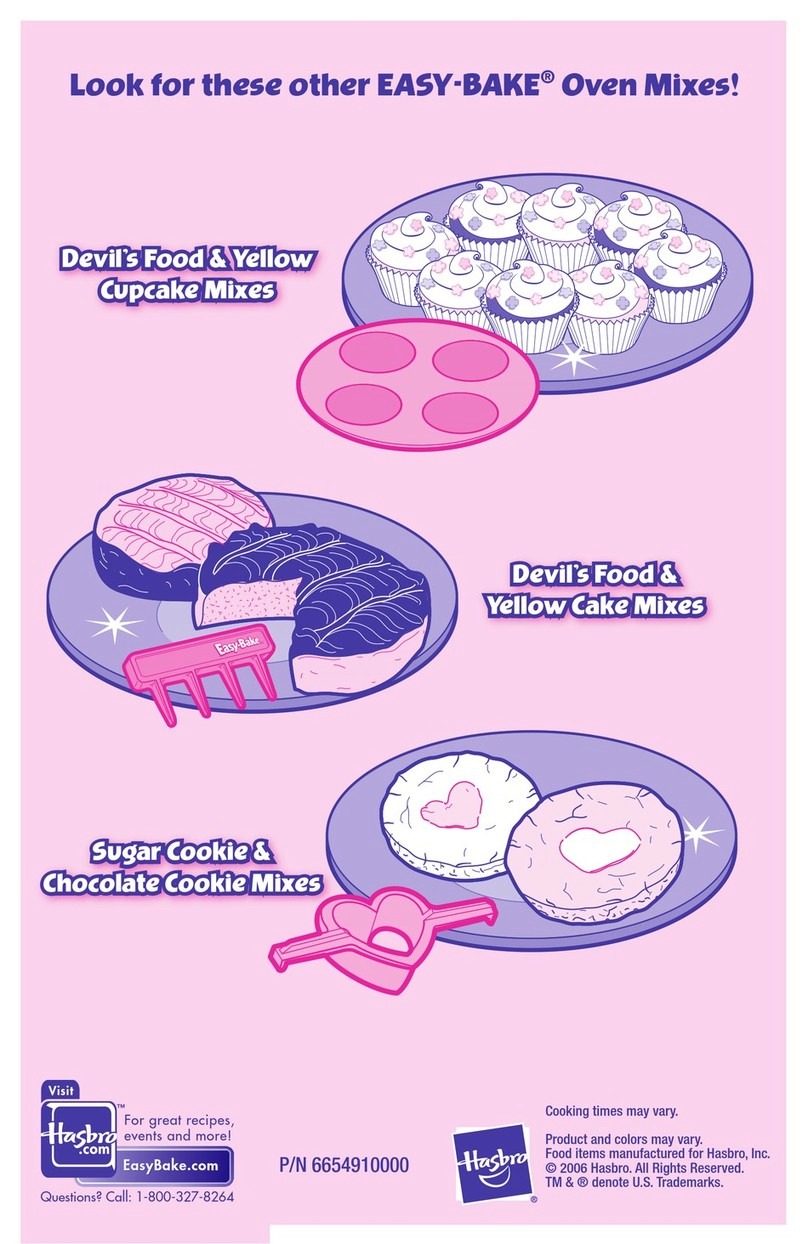
Hasbro
Hasbro Easy Bake Super Pack 6654910000 instructions
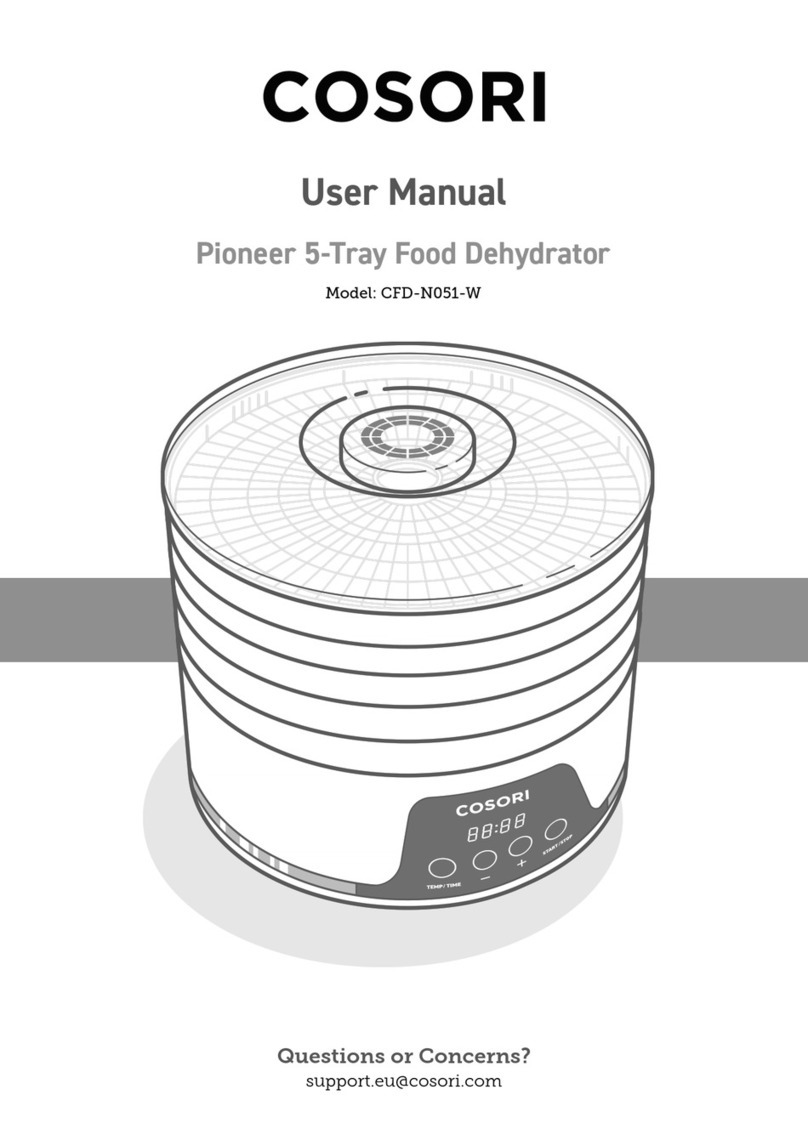
Cosori
Cosori CFD-N051-W user manual
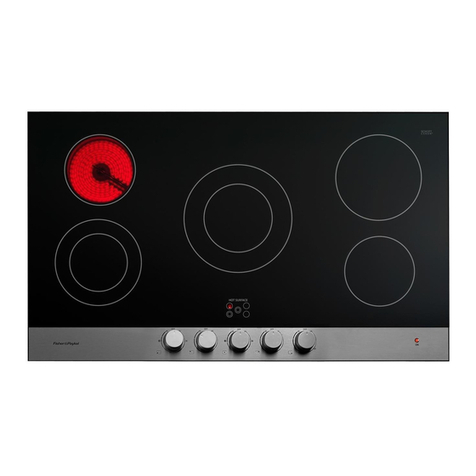
Fisher & Paykel
Fisher & Paykel CG365DWACX1 Features
